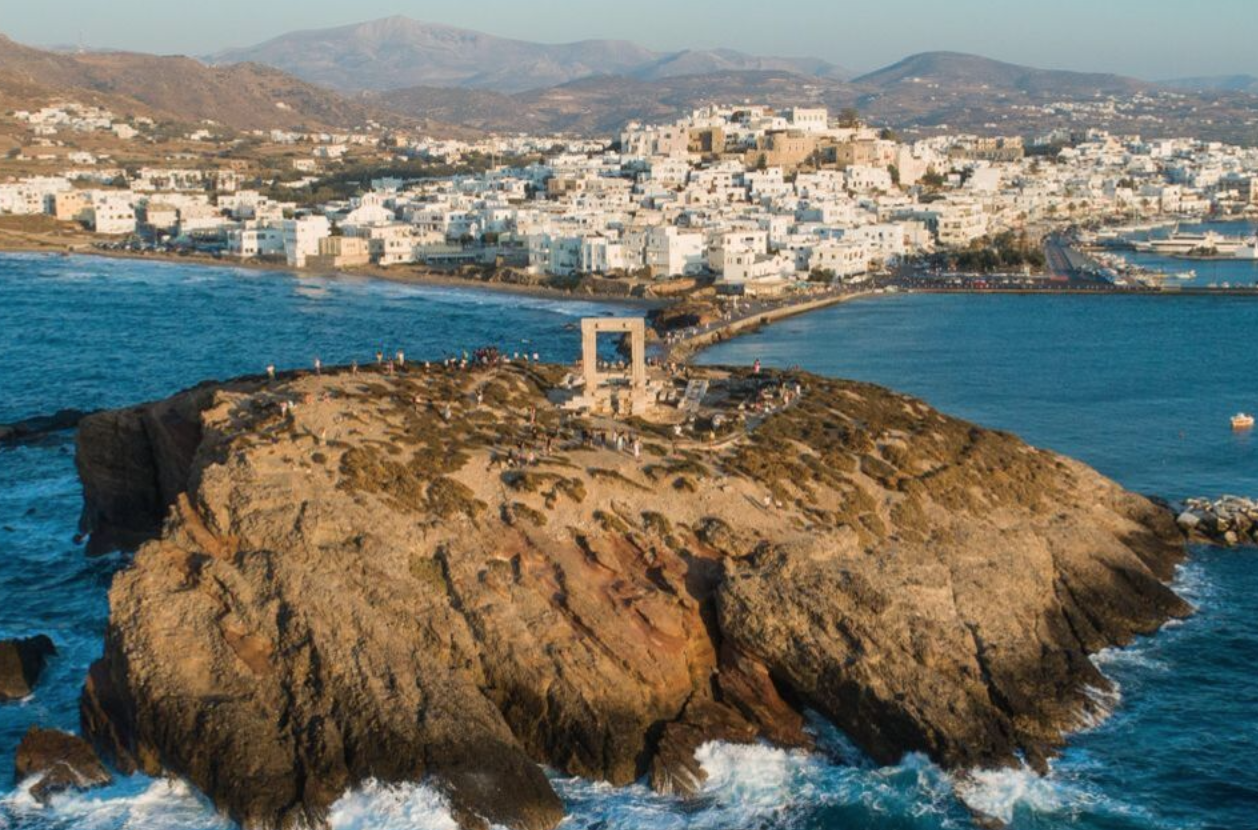注:
- 人名均为音译并给出英文或希腊原文。
- 版权声明:若要转载本文,请参考版权声明
《爱神集》1是一部介绍东正教灵修传统——尤其是介绍耶稣祷文——的经典合集,内容涵盖了四至十五世纪灵修大师的著作。18世纪末期,两位圣山阿索斯的修士,圣山阿索斯的圣尼哥底母 (St Nikodimos of the Holy Mountain of Athos 1749-1809) 和哥林多的圣玛卡里奥 (St. Makarios of Corinth 1731-1805)编辑整理了一部《爱神集》,于1782年在威尼斯首次出版。1893年,这部合集在雅典再次出版,这个版本附加了一些第一版没有的内容:主教卡里斯托(Καλλίστος)的《论祈祷》2。第三个版本分为五卷,于1957到1963年间在雅典由阿斯提出版公司(Astir Publishing Company)出版。我们这个导读版的译文正是基于这个版本。
 《爱神集》第三版第一册封面1957年
《爱神集》第三版第一册封面1957年
12至18世纪,西方先后轰轰烈烈地经历了经院哲学,文艺复兴,宗教改革,启蒙运动。希腊东正教也逐渐形成了以圣山阿索斯为中心的回应模式。18世纪,现代希腊人逐渐受到文艺复兴,启蒙运动影响,开始尊崇柏拉图,亚里士多德,而不是神学家格列高利和认信者马克西姆。3
1754年,在圣山阿索斯爆发了柯尼瓦提斯(Kollyvades)4。柯尼瓦提斯希腊文为Κολλυβάδες,是一种在悼念礼仪之后吃的,由煮好的麦子和糖调煮而成的汁。《爱神集》的出版于这个运动有直接关系。
1754年,在阿索斯山的圣安妮修道团体(the skete of St Anne)出现了一场冲突。其中一些修士想将原本按阿索斯传统在周六举行的悼念礼仪(memorial services)挪到周日主日之后,以图方便。这种创新当然遭到坚持传统的修士反对,坚持传统的一方称为柯尼瓦提斯运动,其中圣玛卡里奥和圣山的圣尼哥底母便是这场运动的领袖。为了反对世俗主义和西方启蒙运动带来的影响,他们必须回到真正的东正教传统。这当然涉及重新挖掘教父神学,灵修和礼仪传统。这种运动,尤其是每周日都领圣餐礼,遭到修士,平信徒,甚至首牧的反对5,直到1819年才平反6,确定每次主日礼仪都要领圣餐。
圣尼哥底母7,26岁进入阿索斯圣山修道,终其一生在那里,他是《爱神集》的编辑者,有人尊称他为“阿索斯传统的百科全书”8。
 Island of Naxos 希腊岛屿
Island of Naxos 希腊岛屿
1749年,尼哥底母出生于纳克索斯岛(island of Naxos希腊岛屿),从小受教于该岛的修道院长柯瑞三索(Archimandrite Chrysanthos)。16岁时,他去士麥那(Smyrna)的一所福音学校上课,在那里学习了拉丁语,法语和意大利语。此后5年(1765-70),由于他惊人的学习才能(过目不忘),他被邀请成为那里的老师,后来回到纳克索斯岛,在那里做了帕罗斯岛(Paros)和纳克索斯岛的大主教的助理和秘书,那时他认识了来自阿索斯山的修士, 圣玛卡里奥。
尼哥底母本可以去一所西方的天主教或新教大学深造成为学者,然后回来做主教。但他被柯尼瓦提斯(Kollyvades)运动的修士们吸引。最终,1775年,26岁的尼哥底母进入圣山的狄奥尼修斯修院(the monstery of Dionysiou) 那里是为数不多保存了不少教父手稿的修院)成为修士。
两年后,根据尼哥底母的传记作者,其私人朋友,圣职修士伊芙瑟模(Hieromonk Evthymios)记载,玛卡里奥给他带来三本书的手稿,并交付尼哥底母去修订,其中写道:
“1777年,哥林多的圣(主教)玛卡里奥去阿索斯山,在朝圣了其中的修院后,他来到卡耶斯(Karyes),在圣安东尼洞穴(Kellion)9蒙一个叫大卫的长者招待。他呆在那里的时候,他召来尼哥底母,要求他去修订《爱神集》。如此,这位蒙福者开始了这项工作。我们会问:[具体]从事什么工作?我不知所措,不知道说什么,或者如何去描述这属灵的争战以及身心过度的劳作。我的心思完全没有能力去揣测。我说,他修订《爱神集》,在我们面前的,有他写的美丽的序言和简短而甜如蜜的蒙福教父的生平。他同样校订了《艾薇耶提诺 (Evergetinos)》,并附上一篇良好的序言。他校订并增补一篇简短纯金的作品:《论神圣的持续圣餐 (On the Divine and Holy Continual Communion)》。圣玛卡里奥从尼哥底母接受了这三部著作,然后他来到士麥那(Smyrna) 集资出版。”10
1782年《爱神集》在威尼斯出版,1223页的一大本,没有提及编辑者名字,只提到赞助者约翰∙马若阁达托 (John Mavrogordato),次年(1783年),由11世纪的艾薇耶提斯的保罗(Paul of Evergetis d.1054)编辑的苦修选集《艾薇耶提诺《艾薇耶提诺 (Evergetinos)》11出版,同年出版了《论神圣的持续圣餐 (On the Divine and Holy Continual Communion)》12。
在国内通常译为《爱神集》或《爱美集》,希腊原文为:φιλοκαλία, φιλο有相亲相爱之意,καλία字面意思为善的,美的,希腊哲学中指太一,即至高神,在基督教语境下就是指上帝。故笔者翻译为《爱神集》。本文参考了Kallistos Ware 和Graham Speake的文章,请见:Kallistos Ware, “St. Nikodimos and the Philokalia,” in The Philokalia : A Classic Text of Orthodox Spirituality, ed. Brock Bingaman, Bradley Nassif, and Inc ebrary (New York: Oxford University Press, 2012), 9–35. Graham Speake, “St Nikodimos of the Holy Mountain (1749–1809): Editor of the Philokalia,” in A HISTORY OF THE ATHONITE COMMONWEALTH :The Spiritual and Cultural Diaspora of Mount Athos (Cambridge: Cambridge University Press, 2018), 234–48. ↩︎
这个版本可以在网上下载:https://archive.org/details/Philokalia1893GreekAthens/mode/2up ↩︎
Kallistos Ware, “St. Nikodimos and the Philokalia,” in The Philokalia : A Classic Text of Orthodox Spirituality, ed. Brock Bingaman, Bradley Nassif, and Inc ebrary (New York: Oxford University Press, 2012), 10. ↩︎
参:同上, 11. 关于这场运动,稍带敌意的,Ch. S. Tzogas, I peri ton mnimosynon eris en Agio Orei kata ton 18 aiona (Thessaloniki, 1969). 更简明但表示理解的,K. K. Papoulidis, To kinima ton Kollyvadon (Athens, 1971). 进一步的参考书目,见: G. Podskalsky, Griechische Theologie in der Zeit der Türkenherrschaft (1453-1821) (München, 1988), pp. 329–85, and in E. Morini, “Il Movimento dei ‘Kollyvadhes,’ Rilettura dei contesti più significativi in ordine alla rinascità spirituale Greco-Ortodossa dei secoli xviii–xix,” in O. Raquez (ed.), Amore del bello: Studi sulla Filocalia, op. cit. (n. 2), pp. 137–77. 关于尼哥底母自己的对这场运动的看法,见他的《认信 (Confession of Faith)》, 英文翻译见: Fr. George Dokos (Thessaloniki, Uncut Mountain Press, 2007). ↩︎
在十八世纪,希腊东正教平信徒一般一年领圣餐三到四次,很多一年只在复活节领一次。阿索斯山未按立的修士一般最多40天才能领一次(Ware, “St. Nikodimos and the Philokalia,” 11)。关于希腊东正教的领圣餐的频率,见: F. Herman, “Die häufige und tägliche Kommunion in den byzantinischen Klöstern,” in Mémorial Louis Petit, Archives de l’Orient chrétien 1 (Bucharest, 1948), pp.203–17; R. Taft, Beyond East and West: Problems in Liturgical Understanding (Washington, DC, 1984), pp. 61–80; K. Ware, “Prayer and the Sacraments in the Synagoge,” in M. Mullett and A. Kirby (eds.), The Theotokos Evergetis and Eleventh-Century Monasticism, Belfast Byzantine Texts and Translations 6:1 (Belfast, 1994), pp. 325–47, esp. pp. 336–41. ↩︎
参:J. D. Mansi and L. Petit, Sacrorum Conciliorum Nova et Amplissima Collectio 40 (Paris, 1909), pp. 81–82. ↩︎
关于圣尼哥底母的生平,英文参见C. Cavarnos, St. Nicodemos the Hagiorite, Modern Orthodox Saints 3 (Belmont, 1974); 以及 St. Makarios of Corinth, Modern Orthodox Saints 2 (Belmont, 1972). 关于他的参考书目,见 D. Stiernon, “Nicodème l’Hagiorite,” Dictionnaire de Spiritualité 11 (1981), cols. 234–50; I. [=E] Citterio, L’orientamento ascetico-spirituale di Nicodemo Aghiorita (Alessandria, 1987), pp. 7–21 (Ware推荐) and E. Citterio, “Nicodemo Agiorita,” in C. G. Conticello and V. Conticello, La théologie byzantine et sa tradition, vol. 2, pp. 905–78 (esp. pp. 973–98). See also G. E. Marnellos, Saint Nicodème l’Hagiorite (1749-1809), maÎtre et pédagogue de la nation grecque, Analecta Vlatadon 64 (Thessaloniki, 2002). ↩︎
M.Gedeon, O Athos: Anamniseis-Engrapha-Simeioseis (Constantinople, 1885), 第216页. ↩︎
Kellia一词源自埃及沙漠洞穴修道,指从圣安东尼而来的一人,二人等少数组成的隐修团体,区别于大型的修道院。 ↩︎
Evthymios, Life of Nikodimos, ed. S. Lavriotis, in the periodical Grigorios o Palamas, 4 (1920), pp. 636–41; 5 (1921), pp. 2l0–18; 见640页. 一个修订版本见:N. Bilalis, O prototypos vios tou agiou Nikodimou tou Agioreitou (Athens, 1983). Evthymios 在1813年写了尼哥底母归天家四年后写了他的传记。本内容摘译自: Ware, , “St. Nikodimos and the Philokalia,” 15. ↩︎
英文翻译请见: Archbishop Chrysostomos and Hieromonk Patapios (eds.), The Evergetinos: A Complete Text, 4 vols (Etna, CA: Center for Traditionalist Orthodox Studies, 2008). ↩︎
有两个英文译本: (1) Hieromonk Patapios and Archbishop Chrysostomos (trs.), Manna from Athos: The Issue of Frequent Communion on the Holy Mountain in the Late Eighteenth and Early Nineteenth Centuries (Oxford, 2006), pp. 53–181. (2) Fr. George Dokos (tr.), Concerning Frequent Communion of the Immaculate Mysteries of Christ (Thessaloniki, Uncut Mountain Press, 2006). ↩︎
